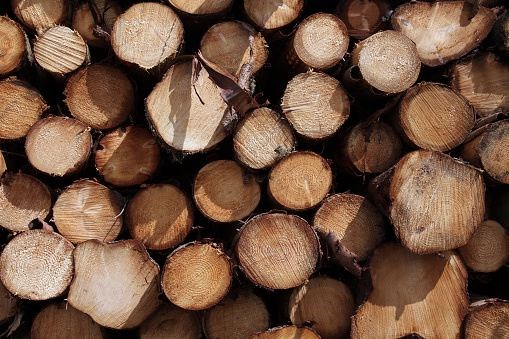This week, the legal safety net was removed from the Canada-U.S. Softwood Lumber Agreement, but it is mostly business as usual so far for area lumber production.
The trade pact ran past its actual due date more than a year ago, but there was a one-year provisional carry-on of the deal and once that passed there was an additional standstill period during which no legal action could be taken by either side.
That deadline passed on Wednesday.
The expiry of the standstill period has little practical impact on either side of the border, but it is the next step toward industry uncertainty for the forest sector in Canada and the retail lumber sector in the United States.
Susan Yurkovich, president of the BC Lumber Trade Council, said the provincial flow of wood products into the United States was only slightly higher than normal for this time of year, and there was no market pressure to either slow it down or speed it up due to this deadline.
The federal government issued a statement at the expiration point to reiterate that this was not a signal of a negotiation problem.
"The softwood lumber industry is a vital sector for both the United States and Canada. In our effort to reach a new agreement on softwood lumber, we and our officials have been intensively engaged in government-to-government sessions, in meetings with our respective producers and other stakeholders, and in dialogue with state and provincial governments," said Chrystia Freeland, Canada's Minister of International Trade.
Freeland added, "While our engagement has yet to produce a new agreement, our governments will continue negotiations though the standstill period has expired. In those negotiations, we will work to meet the mandate agreed to by President Barack Obama and Prime Minister Justin Trudeau when they met in Ottawa in June - a new agreement that is designed to maintain Canadian exports at or below an agreed-upon U.S. market share to be negotiated, with the stability, consistency and flexibility necessary to achieve the confidence of both industries."
"In that regard, Canadian and American officials are continuing to meet in Washington, D.C., this week," Freeland said.
Yurkovich said she was aware that talks had in fact been held that very day, signally strong momentum on the part of the two government.
Asked whether she thought the American lumber lobby would let Canadian lumber flow freely for the time being, she expressed doubt.
"No, I expect they will file legal action shortly," she said.
There have been hostile American producers in the past, who launched a lengthy number of legal cases to disable the ability of Canadian mills to ship lumber into the U.S. on a cost-effective basis. On almost every legal accusation, Canada has emerged victorious.
This wrangling occurred, however, at a different time in trade history.
The market conditions are greatly changed now, compared to those previous court fights, and Canada still has some protection from any new attempts by the American side of the industry to issue egregious legal obstacles.
Yurkovich said there was a period of legal study that would be automatically triggered by any assertions made in court by either side.
That would, at the very least, buy more time for the negotiations going on at the governmental table.
"The B.C. Lumber Trade Council continues to believe that a new agreement, if properly designed, is in the best interests of producers, consumers, home builders and workers in the industry on both sides of the border," Yurkovich said. "Completing a new agreement would also allow us to continue the important work being undertaken with the U.S. industry to jointly grow the market for wood products both domestically and internationally."
Although the negotiations on a trade agreement happen at the federal level, it is British Columbia that has the most involvement in the selling of softwood products into the United States. B.C. also represents the largest vendor of softwood products that the United States buys from. It is the backbone industry for the entire province.
The lumber trade council is comprised of a consortium of lumber producers under the combined auspices of the Council Of Forest Industries and the Coast Forest Products Association, along with the Alberta Softwood Lumber Trade Council as an affiliate member.



